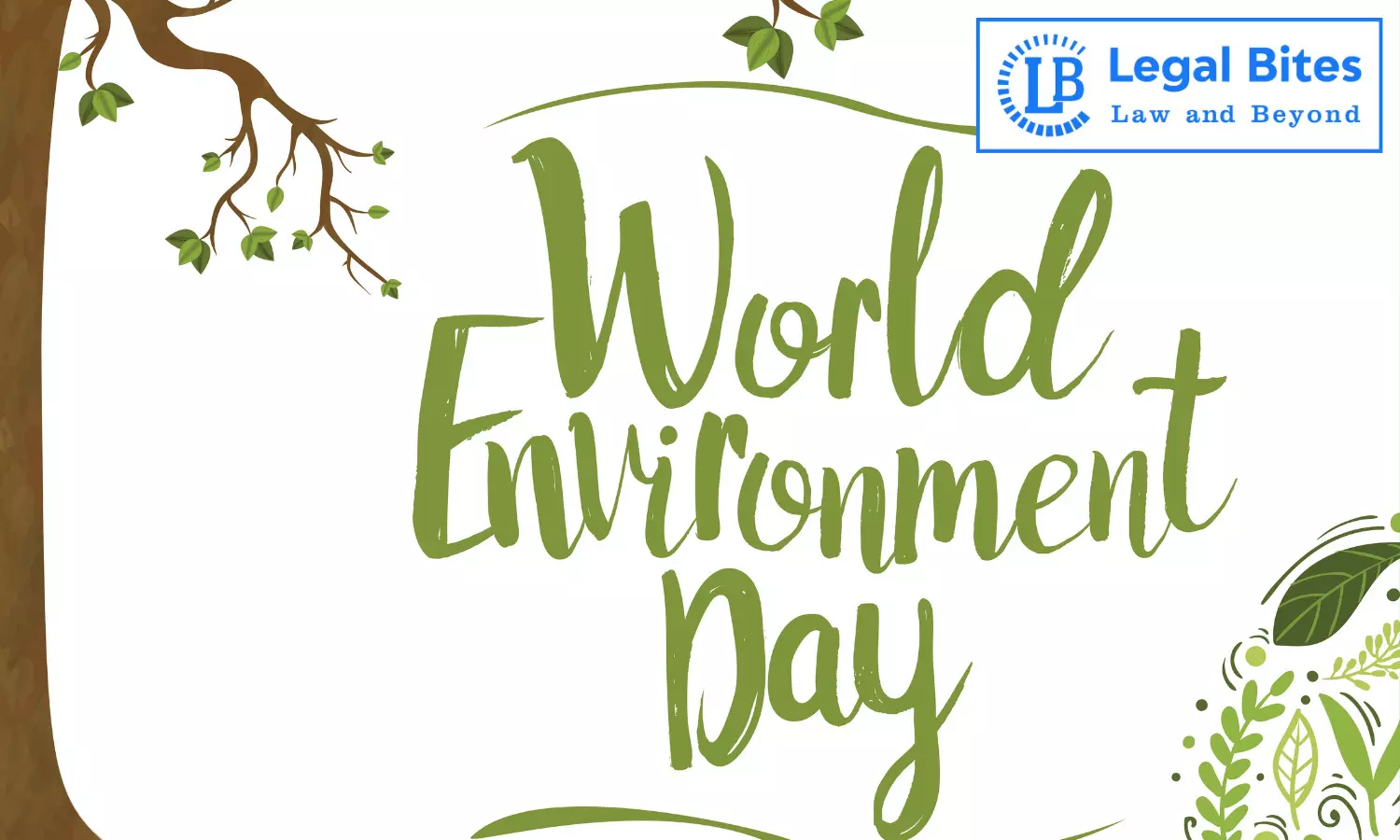World Environment Day 2023 | 5th June
The article 'World Environment Day, (5th June)' emphasises the interdependence of human beings and the natural world, highlighting the crucial role that a healthy environment plays in supporting our livelihoods and overall well-being.

The article 'World Environment Day, (5th June)' emphasises the interdependence of human beings and the natural world, highlighting the crucial role that a healthy environment plays in supporting our livelihoods and overall well-being. It aims to disseminate information about the history, theme, global participation, and impact of World Environment Day.
World Environment Day 2023 | 5th June
World Environment Day is an annual event observed on June 5th to raise global awareness and promote action for the protection and preservation of the environment. It serves as a platform to encourage people worldwide to take positive environmental actions and drive change in their communities.
Here are some key points about World Environment Day:
History: World Environment Day was established by the United Nations General Assembly in 1972 during the Stockholm Conference on the Human Environment. The first World Environment Day was celebrated in 1974.
Theme: Each year, World Environment Day focuses on a specific environmental issue or theme. The theme is chosen to highlight a pressing concern and encourage individuals, organizations, and governments to take action. The theme for each year is determined by the United Nations Environment Programme (UNEP).
Global Participation: World Environment Day is celebrated in over 100 countries, involving millions of people, including individuals, communities, organizations, and governments. Various activities such as tree planting, clean-up campaigns, awareness drives, seminars, and workshops are organized worldwide.
Host Country: Every year, a different country is selected as the global host for World Environment Day celebrations. The host country plays a crucial role in setting the stage for international discussions and action on environmental issues.
Awareness and Advocacy: World Environment Day provides a platform for raising awareness about environmental challenges and promoting sustainable practices. It encourages individuals and organizations to adopt eco-friendly behaviours, such as reducing waste, conserving energy, protecting biodiversity, and adopting sustainable lifestyles.
Sustainable Development Goals (SDGs): World Environment Day aligns with the United Nations' Sustainable Development Goals, which aim to address global challenges such as poverty, inequality, climate change, and environmental degradation. The event contributes to the achievement of several SDGs, including Goal 13 (Climate Action) and Goal 15 (Life on Land).
Global Campaigns: The United Nations Environment Programme launches global campaigns in support of World Environment Day. These campaigns aim to mobilize individuals, communities, businesses, and governments to take specific actions related to the year's theme. Social media campaigns, online resources, and educational materials are often used to spread the message.
Impact: World Environment Day has made a significant impact over the years. It has played a crucial role in generating political attention, creating awareness, and driving action on various environmental issues, such as climate change, deforestation, plastic pollution, and biodiversity loss.
A healthy environment plays a crucial role in supporting our livelihoods in numerous ways. Here are some key aspects:
Food Security: A healthy environment is necessary for agricultural productivity and food security. A diverse and well-functioning ecosystem supports pollination, nutrient cycling, and pest control, ensuring robust crop yields. Additionally, healthy oceans and freshwater bodies provide a sustainable source of fish and seafood, which is a significant food source for many people worldwide.
Climate Regulation: The environment helps regulate the Earth's climate by absorbing greenhouse gases, regulating temperature, and maintaining weather patterns. Healthy forests, wetlands, and oceans act as carbon sinks, mitigating climate change. Stable weather patterns are essential for agriculture, water availability, and infrastructure planning.
Economic Opportunities: A healthy environment creates economic opportunities and supports various industries. For example, ecotourism relies on pristine natural landscapes and biodiversity, attracting visitors and generating revenue. Sustainable industries like renewable energy, organic farming, and green technologies contribute to job creation and economic growth.
Health and Well-being: A clean and healthy environment directly impacts our physical and mental well-being. Fresh air and clean water are vital for maintaining good health. Access to green spaces, such as parks and forests, promotes physical activity, reduces stress, and enhances mental health. Furthermore, a healthy environment helps prevent the spread of diseases and reduces exposure to pollutants and toxins.
World Environment Day serves as a reminder that everyone has a role to play in protecting and preserving the environment. It emphasizes the need for collective efforts and individual actions to create a sustainable and healthier planet for future generations.

